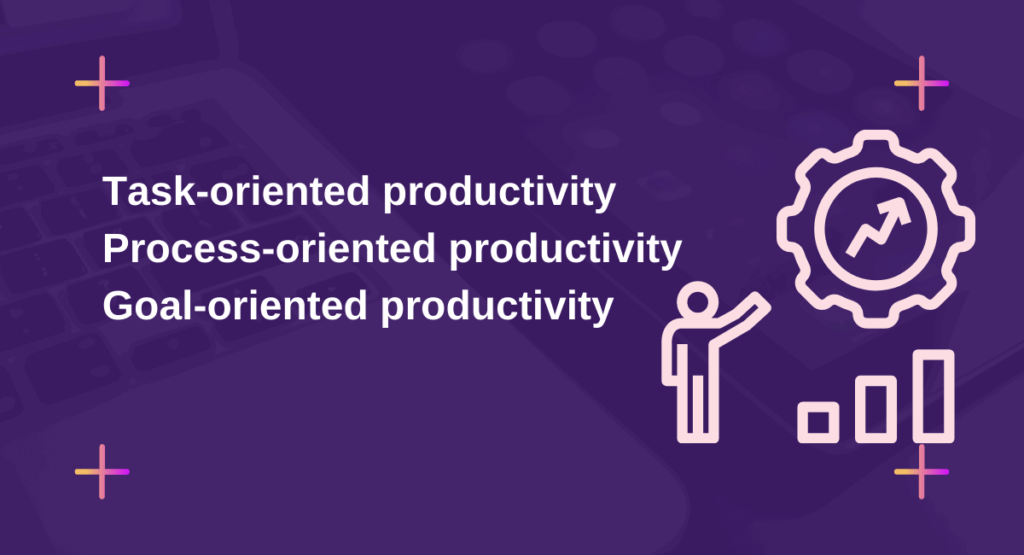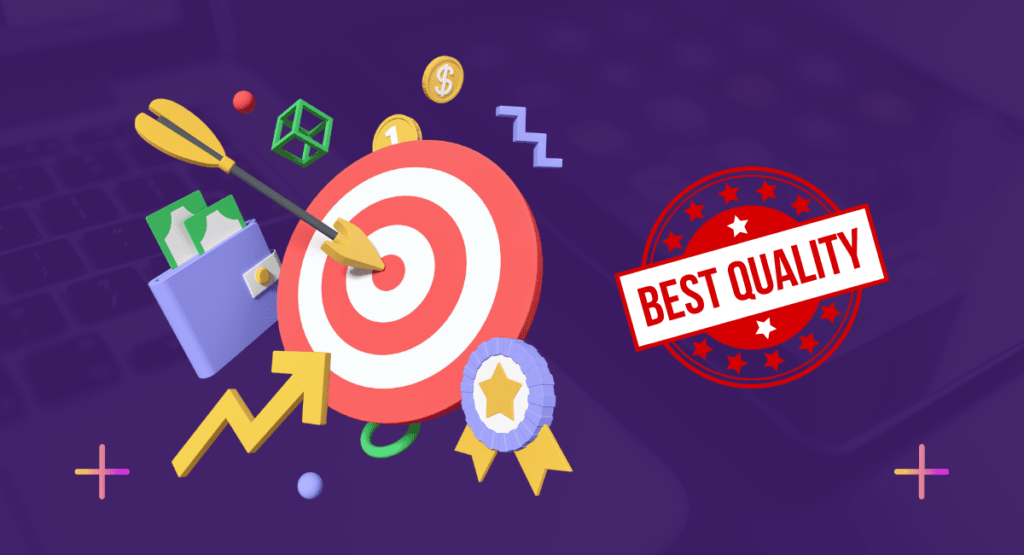Want a More Efficient Productivity Function? Here’s What You Need to Know


Be More Productive with Efficient Productivity Functions.
Do you want to maximize your efficiency and get more done? Look no further than productivity functions.
Whether you’re a freelancer, an entrepreneur, or part of a team, productivity functions can help you streamline workflows, simplify complex tasks and increase overall results.
But how do you get started? Discover all the essentials for creating a winning productivity function that will take your productivity to the next level.
Read on!
What Exactly Is a Productivity Function?
“Productivity Is About Your Systems, Not Your People.” Daniel Markovitz.
A productivity function measures how much output you can get from a specific input.
It looks at the relationship between the inputs (time, money, materials) and the outputs (products or services). It helps you figure out how to get more done with less effort.
Benefits of Utilizing a Productivity Function
A productivity function can be incredibly beneficial for businesses and organizations. It can help them maximize their resources to obtain a higher output with less effort, thus helping them save time and money.
Utilizing a productivity function can also help these entities achieve greater efficiency and accuracy in their operations and create new growth opportunities.
The different types of productivity functions available

The productivity function is an essential factor in determining the success of a business. Many different productivity functions are available, and understanding which works best for your business can help increase productivity and profitability.
Task-Oriented Productivity
One type of productivity function is task-oriented productivity, focusing on completing specific tasks as quickly and efficiently as possible.
This can involve setting productivity goals, tracking progress, and setting timelines. It can also include automating processes and tasks to reduce the amount of manual labor required.
Task-oriented productivity can help businesses identify areas of inefficiency and improve productivity overall.
Process-oriented productivity
Another productivity function is process-oriented productivity, which focuses on streamlining processes and fostering employee collaboration.
This productivity function can also involve using technology to automate manual processes and make tasks easier to complete.
Process-oriented productivity often involves:
- Identifying workload deficiencies.
- Creating strategies for addressing them.
- Developing systems that reduce the time required for individual tasks.
Goal-oriented productivity
Finally, goal-oriented productivity focuses on setting and achieving organizational goals through improved productivity. This productivity function typically includes setting productivity objectives, creating plans for meeting them, and developing systems that enable the organization to reach its productivity goals.
It also involves recognizing and rewarding employees who demonstrate exceptional productivity.
Efficient productivity functions can help businesses become more successful by increasing productivity and reducing costs. By leveraging productivity functions to their fullest potential, companies can increase productivity, reduce costs, and ensure that productivity objectives are met.
Understanding which productivity functions work best for each business type can help organizations get the most out of their productivity efforts.
The productivity function is a vital part of any successful business. Implementing effective productivity functions will help increase productivity, improve efficiency, and foster employee collaboration.
Organizations can reap the maximum benefits from their productivity efforts by understanding productivity functions and utilizing the most effective ones for their business.
Tips and Strategies for Optimizing Your Productivity Function

Successfully optimizing production functions relies on implementing the right tips and strategies. Understanding production processes and how to measure productivity outcomes is essential in harnessing production capacity and generating cost-efficiency.
Implementing production control systems, such as total quality management or just-in-time production, is another way to maximize production capabilities.
Establishing attainable productivity goals with effective performance measures can also help improve productivity. Finally, regularly reviewing production systems and assessing production data can provide vital insights for tweaking production methods for improved performance.
Each of these tips and strategies is a critical part of optimizing production functions.
How to Simplify and Streamline Processes
Streamlining processes is a fundamental step to achieving efficiency in any workplace.
An aggregate production function is a tool that allows organizations and their leaders to identify areas of waste or redundancy in procedures and provide an elusive understanding of how different activities affect productivity and output.
This type of analysis increases the overall effectiveness of any system it is applied to while allowing resources to be allocated to areas of increased value. Furthermore, choosing efficient methods instead of inefficient processes ensures that quantity doesn’t compromise quality.
By taking the time to simplify and streamline processes through aggregate production functions, organizations stand to gain higher levels of performance from increased profitability, heightened customer satisfaction, and greater employee engagement.
Automating Tasks for Increased Efficiency

Automating tasks is an effective way to increase efficiency and productivity on a more consistent basis. Automation allows more realistic production functions than relying solely on human labor. It can speed up processes and allow employees more time to focus on higher-level or more demanding tasks.
Automation is more efficient and allows for more accurate information gathering and better results tracking. With its ability to help increase efficiency and improve workflows, automation is an invaluable tool in the modern workplace.
Integrating Your Productivity Function With Other Systems for Maximum Impact
Integrating your productivity function with other systems enables maximum output at a low marginal cost. Both internally and externally, automating processes and allowing them to leverage additional data means more information is available to inform decision-making and personalize services.
This integration can provide powerful insights that give stakeholders a clear look into how the process operates and where adjustments may be needed while remaining agile enough to respond effectively to changing market demands.
Furthermore, it reduces the need for manual intervention, freeing up resources for other important tasks. When combined with the advantages of maximum output at a low marginal cost, investing in system integration will help deliver lasting results for your organization.
All system players benefit from this integration from both a cost and outcomes standpoint. Businesses will reap maximum impact at a reduced cost by considering potential combinations within their organizational system and product-integrating solutions.
Utilizing Technology to Measure and Monitor Progress

Technology can be a powerful tool to measure and monitor progress. It can make the variable output easier to process and understand, ensuring decision-makers have clear feedback on essential activities. This can allow businesses to quickly assess where they stand and what changes might be needed to continue getting consistent returns.
Using technology in this way provides several promotional benefits, including increased efficiency and improved data consistency, which leads to more reliable results and easier communication of progress reports. With the technology available at our fingertips now more than ever, it should be no surprise that businesses are increasingly utilizing it for measurement and monitoring purposes.
Time management techniques to maximize effectiveness and efficiency
Managing time is essential for any business to maximize its effectiveness and efficiency. The basic production function involves the input of resources and the output of goods or services – an underlying concept that informs how we use our time.
By improving the production process, it is possible to optimize the output while minimizing input costs and time invested.
Time management techniques such as setting achievable goals and objectives, prioritizing tasks, breaking up work into smaller sections, and monitoring progress help you use valuable time effectively. This can facilitate businesses to increase their above-average returns by utilizing basic production functions more efficiently.
Common Mistakes to Avoid When Using a Productivity Function

When using a productivity function, there are common mistakes to avoid, and It’s to maximize your efficiency and minimize the amount of time spent on tasks. The most frequent missteps include the following:
Not setting realistic goals.
It is crucial to set achievable and measurable objectives so that you can track your progress. If you put too high of a goal, you may become overwhelmed and end up procrastinating or giving up altogether.
Focusing on quantity rather than quality
It can be tempting to put all your energy into completing tasks quickly, but this can lead to a lack of quality in work and an overall decrease in productivity. Take the time to do your best work, even if it takes longer than expected.
Multi-tasking
It is important to be able to juggle multiple tasks when necessary, but trying to do too much at once can lead to mistakes and muddled results. Instead, focus on one task until it is complete before moving on to the next one.
Not taking regular breaks.
Working for too long without a break can make you exhausted and less productive in the long run. Regular breaks throughout your day give your brain time to recharge and help you stay focused on the task at hand.
Not using tools to track progress.
Keeping track of your progress and the tasks you have completed allows you to know where you stand and how close you are to reach your goals. Use a productivity tool or spreadsheet to keep track of what needs tasks to do, and update it regularly.
Underestimating the Time and Effort Required in Establishing an Effective System
Sometimes it can take a lot of time and effort to make something that works well. It is important to think about how long it might take and how much work it might be before you start.
Failing to Leverage Advanced Technologies to Make the Most Out of Your System
Using the best technology when trying to make something work is important. If you don’t use the best technology, it might not work as well as it could.
These tips will help you avoid common mistakes when using a productivity function, stay on track, and maximize efficiency.
Remember to set realistic goals, focus on quality over quantity, break up complex tasks into manageable chunks, take regular breaks, and use a tracking tool to stay organized. By following these simple steps, you can be sure to reach your desired results.
Lastly, make sure to leverage the right technologies and make it work as efficiently as possible. Doing so will help you maximize productivity and succeed in your tasks.
Showcase examples of successful companies that have implemented effective productivity systems

Examples of Successful Companies With Effective Productivity Systems
Google has implemented an extensive productivity system focusing on efficiency, collaboration, and communication. This system relies on automated tools like Google Calendar to help manage tasks and utilize project management applications such as Slack and Trello.
Amazon
Amazon has implemented a productivity system that relies heavily on automation and analytics. The company uses technologies such as Machine Learning, Data Mining, and Predictive Analysis to improve the efficiency of its processes.
Apple
Apple’s comprehensive productivity system focuses on streamlining processes across the organization. This system revolves around process automation using tools like Automator and Workflow and coordinating information between departments using internal messaging systems like iMessage and Chatter.
Collaborating with Others Can Help Improve Productivity
Collaborating with Others Can Help Improve Productivity
When it comes to achieving success, collaboration is essential. Working together with others can help us accomplish more than we could alone.
Collaborative efforts can become essential to any productivity plan — it’s often easier to develop new ideas and achieve goals when working as a team.
Each member’s shared purpose and input make it possible to create faster and more efficient solutions.
Working collaboratively also enables sharing of knowledge and skills that help everyone involved grow as individuals.
Conclusion
Productivity functions can be a powerful tool for businesses of all sizes, helping them to save time and resources to improve the quality of their work.
Implementing an effective productivity system requires careful thought, planning, and leveraging advanced technologies like automation and analytics.
If you follow these tips, you can create a productivity function that will help your business succeed.
Take action today toward creating a more productive workplace environment:
- Assessing how you use technology in your organization
- Setting realistic goals
- Breaking up tasks into manageable chunks
- Taking regular breaks
- Tracking progress with tools or spreadsheets
- Leverage the best technology available.
With the right approach and dedication to improvement, you can ensure maximum productivity within your team.


